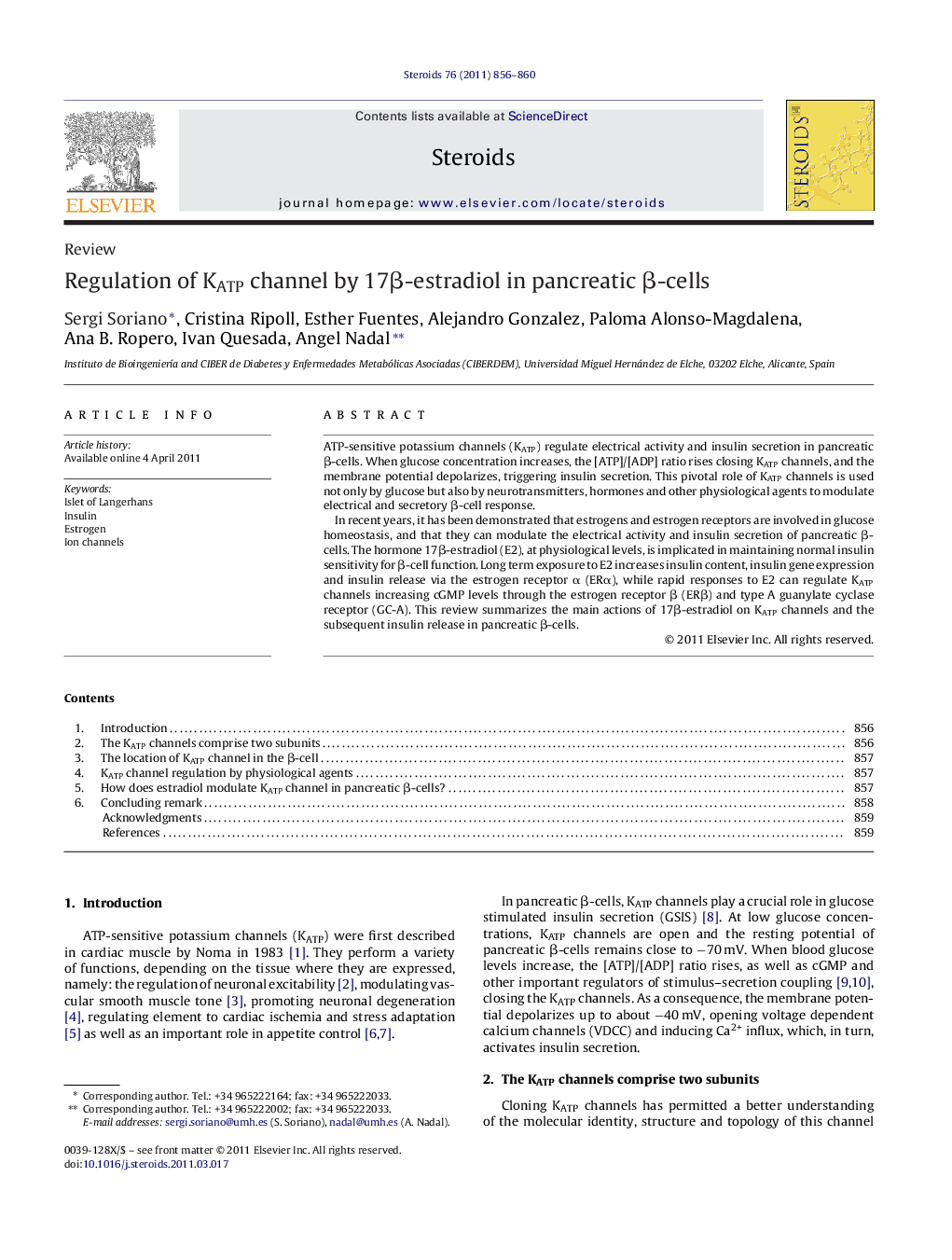| Article ID | Journal | Published Year | Pages | File Type |
|---|---|---|---|---|
| 2028546 | Steroids | 2011 | 5 Pages |
ATP-sensitive potassium channels (KATP) regulate electrical activity and insulin secretion in pancreatic β-cells. When glucose concentration increases, the [ATP]/[ADP] ratio rises closing KATP channels, and the membrane potential depolarizes, triggering insulin secretion. This pivotal role of KATP channels is used not only by glucose but also by neurotransmitters, hormones and other physiological agents to modulate electrical and secretory β-cell response.In recent years, it has been demonstrated that estrogens and estrogen receptors are involved in glucose homeostasis, and that they can modulate the electrical activity and insulin secretion of pancreatic β-cells. The hormone 17β-estradiol (E2), at physiological levels, is implicated in maintaining normal insulin sensitivity for β-cell function. Long term exposure to E2 increases insulin content, insulin gene expression and insulin release via the estrogen receptor α (ERα), while rapid responses to E2 can regulate KATP channels increasing cGMP levels through the estrogen receptor β (ERβ) and type A guanylate cyclase receptor (GC-A). This review summarizes the main actions of 17β-estradiol on KATP channels and the subsequent insulin release in pancreatic β-cells.
► KATP channels regulate electrical activity and insulin secretion in pancreatic β-cells. ► KATP channels are regulated by physiological agents such as ATP, PIP2 and LC-CoAs. ► Estrogens are involved in glucose homeostasis; they can modulate the electrical activity in pancreatic β-cells. ► 17β-estradiol regulates KATP channels increasing cGMP levels through the ERβ and GC-A. ► ERβ and GC-A are involved in the rapid regulation of KATP channels by E2.
